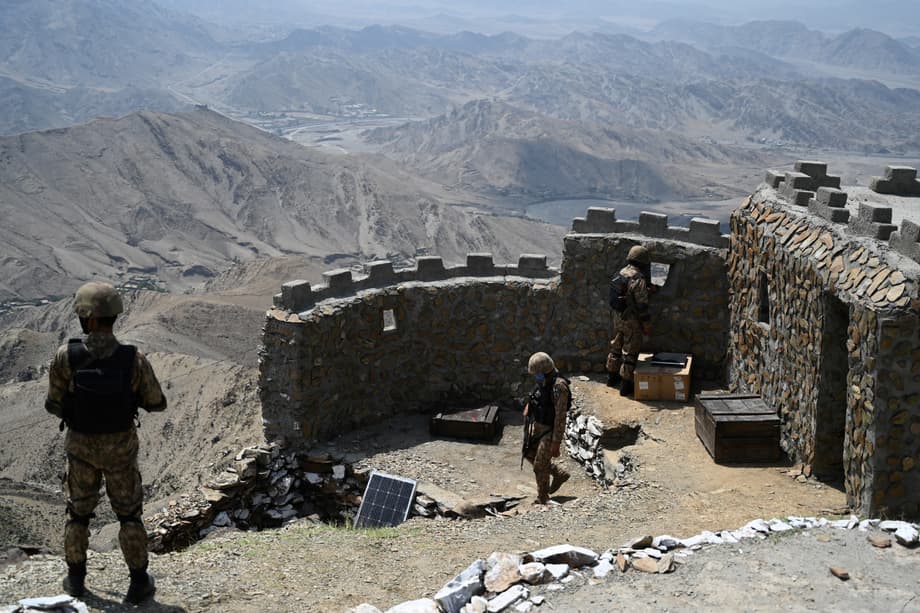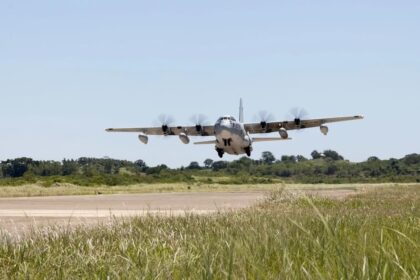A night of shelling on a long and bitter frontier
Dozens of fighters were killed in heavy overnight clashes along the Pakistan Afghanistan frontier, the most serious fighting between the neighbors since the Taliban took power in Kabul in 2021. Pakistan’s military said 23 soldiers were killed and 29 wounded. Afghan officials said nine of their fighters died and at least 16 were injured. Each side claimed to have inflicted far higher losses on the other and to have destroyed border posts, claims that could not be independently verified given limited access to the mountainous border belt.
- A night of shelling on a long and bitter frontier
- Competing claims and what we know so far
- What sparked the flare up
- Flashpoints along the border
- A disputed line with a long history
- Trade halted and border communities caught in the middle
- What each side is saying
- TTP and the shifting relationship
- India angle and regional stakes
- Military balance and risk of escalation
- What to Know
By Sunday morning, the exchanges had largely subsided, though intermittent gunfire continued in parts of Pakistan’s Kurram district, according to local officials. Pakistan closed major crossings along the roughly 2,600 km frontier, including at Torkham and Chaman, as well as smaller points at Kharlachi, Angoor Adda, and Ghulam Khan. Afghan authorities said their retaliatory operations ended at midnight after appeals from Qatar and Saudi Arabia for restraint.
Competing claims and what we know so far
The two governments released sharply different accounts of what unfolded. Pakistan’s military reported the loss of 23 soldiers and said its forces struck back with artillery, air power, and ground raids, asserting that more than 200 Afghan Taliban and allied fighters were killed. Afghan officials rejected that account. Kabul said its forces launched retaliatory fire against Pakistani positions, claiming to have killed 58 Pakistani soldiers and to have captured or destroyed several army posts inside Pakistan’s border zone. None of these battlefield claims have been corroborated by neutral observers.
Paskistani officials described the Afghan fire as an unprovoked assault, while the Taliban administration said its operation was a direct response to earlier strikes on Afghan soil. Both sides claimed to have conducted precision attacks to avoid civilian casualties, and both insisted they were acting in defense of sovereignty.
What sparked the flare up
The latest escalation followed reports that Pakistan conducted airstrikes in Kabul and on a market in eastern Afghanistan earlier in the week. Pakistan has not publicly acknowledged those strikes. Afghan authorities accused Islamabad of violating their airspace and targeting civilian sites, and vowed to respond. Late Saturday, Afghan troops opened fire on Pakistani border posts at multiple points along the frontier, according to officials in both countries. Pakistan said it returned fire with guns and artillery and conducted strikes against Taliban positions across the line.
The war of words echoed the exchange of fire. Pakistan’s leaders condemned what they called unprovoked attacks launched from Afghan territory. The Taliban administration countered that its forces were answering repeated violations of Afghan airspace and that any further incursions would prompt a stronger reaction.
Flashpoints along the border
Fighting was reported at several locations that have long been sensitive, including Angoor Adda in South Waziristan, Bajaur, Kurram, Dir, Chitral, and Bahram Chah. Residents in Pakistan’s Kurram district described hours of shelling and machine gun fire through the night. Afghan defense officials said their operation concluded by midnight after regional partners urged a halt. Pakistani officials said sporadic fire continued in a few pockets on Sunday.
Both sides claimed success against the other’s border infrastructure. Afghan officials said they had taken or neutralized multiple Pakistani posts. Pakistan said it destroyed Taliban positions and targeted training sites along the frontier. Independent verification remains difficult, and the true scale of damage may not be known for days.
A disputed line with a long history
The frontier, known as the Durand Line, was drawn by the British in 1893. It cuts across tribal lands and rugged mountains. Pakistan regards it as the international border. Afghan governments have never formally recognized it. That disagreement, combined with decades of war and the flow of fighters and smugglers, has made this one of Asia’s most volatile borders. Disputes have repeatedly erupted over fencing and the siting of checkpoints.
In response to the latest clashes, Pakistan closed key commercial and pedestrian crossings at Torkham and Chaman, along with smaller points at Kharlachi, Angoor Adda, and Ghulam Khan. Traffic halted on both sides at short notice, stranding travelers and businesses that rely on daily movement for trade and family visits.
Trade halted and border communities caught in the middle
Shutting Torkham, the busiest crossing between the two countries, stranded thousands of cargo trucks. Fresh produce, medicine, and consumer goods sat idle as drivers and traders calculated losses. Each day of closure dents an already fragile regional economy and squeezes livelihoods along the frontier. Business owners warned that even a short stoppage can take weeks to unwind as backlogs ripple through supply chains.
Border communities once again bore the brunt of violence. Residents on both sides described a night of fear as heavy weapons echoed across valleys. Some families fled to safer ground, while others huddled indoors until the shelling eased.
Shabbir Khan, a resident of Kurram district in Pakistan, said the barrage left neighborhoods on edge.
“The fighting went on for hours without pause,” he said.
From the Afghan side of the frontier, Aziz Sayar in Kunar Province described panic among families as gunfire picked up late in the evening.
“Our children screamed in fear as bullets echoed through the night,” he said.
What each side is saying
Pakistan’s military condemned the Afghan attacks, saying its forces repelled assaults, destroyed multiple Taliban positions, and would not tolerate the use of Afghan territory for planning and staging attacks. Officials reported 23 soldiers killed and 29 wounded. Security briefings claimed strikes on hostile positions across the border and the neutralization of large numbers of fighters, while emphasizing efforts to limit harm to civilians.
The army’s chief spokesperson, Ahmad Sharif, said militants hostile to Pakistan were operating from Afghan soil.
“Afghanistan is being used as a base of operations against Pakistan, and there is proof and evidence of that,” he said.
Afghanistan’s Taliban administration rejected Pakistan’s account and warned against any violation of Afghan sovereignty. The government’s chief spokesman, Zabihullah Mujahid, insisted the situation within Afghanistan was under control and framed the overnight attacks as defense of national territory.
“There is no kind of threat in any part of Afghanistan’s territory. The Islamic Emirate and the people of Afghanistan will defend their land and remain resolute and committed in this defence,” he said.
Hamdullah Fitrat, another spokesman for the Taliban government, said Kabul would answer any breach of its airspace or borders.
“Afghanistan has the right to defend its airspace and borders, and no aggressions will go unanswered,” he said.
Afghan officials added that they paused operations at midnight at the request of Qatar and Saudi Arabia, which publicly called for restraint. Iran also urged both sides to avoid escalation.
TTP and the shifting relationship
At the core of deteriorating ties is the presence of the Tehreek e Taliban Pakistan, or TTP, an extremist group that targets the Pakistani state. Islamabad says the TTP leadership finds shelter inside Afghanistan and that the group uses Afghan soil to plan and execute attacks. Afghan authorities deny this. They say they do not allow foreign militants to operate on Afghan territory. The disagreement has hardened since 2021, when the Taliban takeover brought former allies into a tense neighborly standoff.
Violence inside Pakistan has surged. Independent trackers recorded more than 2,400 fatalities in the first three quarters of the year, many linked to attacks in border provinces. Pakistani officials say the spike in ambushes and bombings against security forces prompted recent cross border operations. Kabul calls those operations violations of sovereignty. Both sides point to self defense, a dispute that has made civilian life along the frontier precarious.
Another strain is the fate of Afghans living in Pakistan. Islamabad has moved to deport large numbers of undocumented Afghans, sending tens of thousands back across the border in recent months. Humanitarian groups warn that sudden mass movements place pressure on Afghan communities facing economic hardship. The latest border closures add new obstacles to legal travel and trade, while people with family on both sides face delays and uncertainty.
India angle and regional stakes
The timing of the flare up overlapped with a rare visit to India by the Taliban’s foreign minister, Amir Khan Muttaqi. India said it would upgrade relations, a development that unsettled officials in Islamabad given the long rivalry between India and Pakistan. Pakistani authorities have also alleged that some groups fighting its forces receive outside backing. Afghan officials reject such claims. Pakistan, according to regional reports, placed some units on high alert near the Indian frontier to guard against any opportunistic escalation.
Regional diplomacy is already engaged. Qatar, Saudi Arabia, and Iran have urged both sides to de escalate. Mediation by trusted partners could help re open closed crossings and reduce the risk of renewed barrages. A practical step would be rebuilding direct military to military channels to manage incidents and avoid miscalculation along the frontier’s most volatile stretches.
Military balance and risk of escalation
Pakistan has a modern air force and the capacity to conduct strikes across much of Afghanistan. The Taliban’s strengths lie in ground forces positioned near the border and the ability to apply pressure inside Pakistan through sympathetic militant networks. That asymmetry shapes each side’s calculus. Pakistan can try to impose costs with air power and artillery. Afghan forces can mount quick raids and use the border’s terrain to harass outposts. Any repeat of air or drone strikes inside Afghanistan would almost certainly trigger more retaliatory fire, raising the danger of civilian casualties and a cycle of revenge.
For now, both governments appear wary of a wider war. The quick halt to Afghan operations at midnight, the closure rather than seizure of crossings, and public calls for restraint suggest an attempt to pause before the next step. The main test will be whether the TTP issue, trade disruptions, and border incidents can be addressed through dialogue and verifiable steps on the ground. Without practical measures, the frontier will remain on a hair trigger and communities living along it will face fresh shocks.
What to Know
- Pakistan says 23 soldiers were killed; Afghan officials report nine Afghan fighters dead, with both sides claiming higher enemy losses that cannot be independently verified.
- The clashes followed reported Pakistani airstrikes in Kabul and an eastern Afghan market earlier in the week, which Pakistan has not publicly acknowledged.
- Afghan forces fired on Pakistani border posts late Saturday; Pakistan responded with artillery, air power, and ground raids.
- Major crossings at Torkham and Chaman are closed, along with smaller crossings at Kharlachi, Angoor Adda, and Ghulam Khan.
- Kabul says its operations stopped at midnight after requests from Qatar and Saudi Arabia; Iran also urged restraint.
- The TTP’s presence in Afghanistan is the central dispute. Pakistan says the group uses Afghan soil to attack; Afghan authorities deny this.
- Thousands of cargo trucks are stranded at the border, disrupting trade and livelihoods.
- The flare up coincided with a Taliban foreign minister visit to India, where India said it would upgrade ties, a move watched warily in Islamabad.
- Both sides appear cautious about escalation, but renewed strikes or raids could quickly reignite fighting along the frontier.












